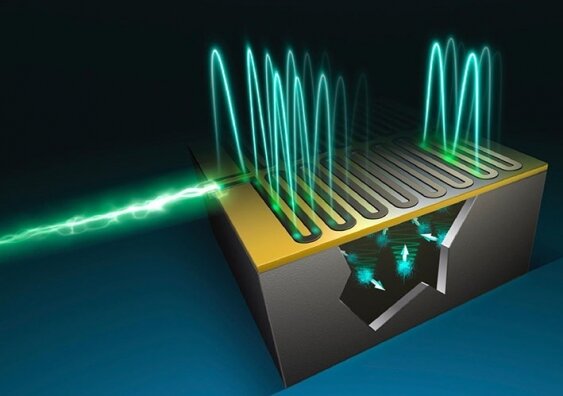Quantum Engineers Develop Precision Spin Measurement Tool for High-Precision Material Analysis
In a recent publication in the journal Science Advances, Associate Professor Jarryd Pla and his team from UNSW School of Electrical Engineering and Telecommunications, along with colleague Scientia Professor Andrea Morello, introduced a novel device designed for high-precision measurement of spins in materials.
“The spin of an electron—whether it points up or down—is a fundamental property of nature,” explained A/Prof. Pla. “It is used in magnetic hard disks to store information, MRI machines use the spins of water molecules to create images of the inside of our bodies, and spins are even being used to build quantum computers. “Being able to detect the spins inside materials is therefore important for a whole range of applications, particularly in chemistry and biology where it can be used to understand the structure and purpose of materials, allowing us to design better chemicals, drugs and so on.”
In various research domains, including chemistry, biology, physics, and medicine, the tool commonly employed for spin measurement is a spin resonance spectrometer. Typically, commercially available spectrometers necessitate billions to trillions of spins for accurate readings. However, A/Prof. Pla and team achieved spin measurements in the order of thousands, making the new tool approximately a million times more sensitive.
This achievement is noteworthy, as there are numerous systems that commercial tools cannot measure, such as microscopic samples, two-dimensional materials, and high-quality solar cells, due to their limited number of spins that fail to generate a measurable signal. The breakthrough occurred serendipitously during the team’s development of a quantum memory element for a superconducting quantum computer. The primary objective of the memory element was to transfer quantum information from a superconducting electrical circuit to a set of spins positioned beneath the circuit.

“We observed that although the device didn’t function precisely as intended for a memory element, it demonstrated exceptional proficiency in measuring the spin ensemble,” explained Wyatt Vine, a lead author on the study. “By introducing microwave power into the device as the spins emitted their signals, we could enhance the signals before their departure. Moreover, this amplification could be achieved with minimal added noise, nearly approaching the limit set by quantum mechanics.”
While prior highly sensitive spectrometers utilizing superconducting circuits existed, they necessitated multiple components, were incompatible with magnetic fields, and had to be operated in extremely cold environments utilizing expensive “dilution refrigerators” that reach temperatures down to 0.01 Kelvin. In this groundbreaking advancement, A/Prof. Pla highlighted that he and the team successfully integrated the components onto a single chip. “Our new technology consolidates several crucial elements of the spectrometer into one device and is compatible with relatively large magnetic fields.
This is significant, as to measure the spins, they need to be placed in a field of about 0.5 Tesla, which is ten thousand times stronger than the Earth’s magnetic field. “Furthermore, our device operated at a temperature more than 10 times higher than previous demonstrations, eliminating the need for a dilution refrigerator.” A/Prof. Pla revealed that the UNSW team has patented the technology with the intention of potential commercialization but emphasized that further work remains.
This article is republished from PhysORG under a Creative Commons license. Read the original article.
Do not forget to share your opinion with us to provide you with the best posts !



0 Comments